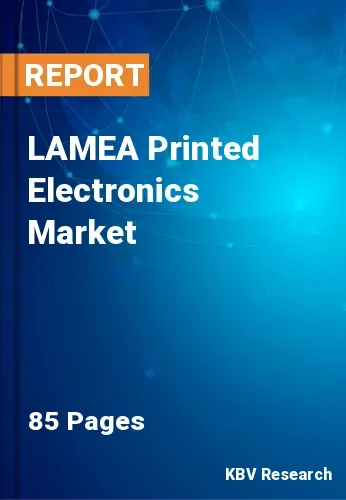The Latin America, Middle East and Africa Printed Electronics Market would witness market growth of 22.7% CAGR during the forecast period (2022-2028).
Lower conductivity, as well as charge carrier mobility, are advantages of printed conductors. Inorganic ink compounds are dispersions of metallic or semiconducting micro-and Nano-particles, with a few exceptions. Silicon and oxide semiconductors were employed as semiconducting nanoparticles in the conventional printing approaches. Silicon can also be printed as an organic precursor, which is then transformed into crystalline silicon via pyrolysis and annealing. Printed electronics can use PMOS but not CMOS. Wireless sensors in packaging, skin patches that interact with the internet, as well as buildings that monitor leaks to enable preventative maintenance are all examples of printed electronics in use or under study. The majority of these applications are currently in prototyping and development.
The United Arab Emirates (UAE) has one of the largest solar exposure rates in the world, making renewable energy production a huge prospect. The country has historically relied on traditional energy sources despite having large indigenous oil and gas reserves. However, in order to prevent the dramatic commodities downturns associated with an oil-based economy, a drive for economic diversification has resulted in new incentives as well as the introduction of cutting-edge renewable energy technologies. Additionally, rapid industrialization, population growth, and increased demand from water desalination facilities have resulted in higher energy demands and a need to diversify inputs.
As a result, the UAE has been at the forefront of the MENA region's renewable energy development. The formation of the Abu Dhabi Future Energy Company, Masdar, and the region's first carbon-neutral zero waste city, Masdar City, in 2006; the hosting of the annual World Future Energy Summit in Abu Dhabi in 2008; the emergence of the Emirates Nuclear Energy Corporation (ENEC) in 2009; the International Renewable Energy Agency (IRENA) designating Abu Dhabi as its headquarters in 2009 and relocating to Masdar City ca. 2010; and the establishment of the Emirates Nuclear Energy Corporation are the milestones are a reflection of the UAE government's efforts for energy conservation.
The Brazil market dominated the LAMEA Printed Electronics Market by Country in 2021, and would continue to be a dominant market till 2028; thereby, achieving a market value of $729.6 million by 2028. The Argentina market is poised to grow at a CAGR of 23.4% during (2022 - 2028). Additionally, The UAE market would display a CAGR of 22.4% during (2022 - 2028).
Based on Material, the market is segmented into Ink and Substrate. Based on Technology, the market is segmented into Screen, Inkjet, Flexographic, and Gravure. Based on Device, the market is segmented into Displays, Photovoltaic, Lighting, RFID, and Others. Based on countries, the market is segmented into Brazil, Argentina, UAE, Saudi Arabia, South Africa, Nigeria, and Rest of LAMEA.
Free Valuable Insights: The Global Printed Electronics Market is Predict to reach $31.6 Billion by 2028, at a CAGR of 20.1%
The market research report covers the analysis of key stake holders of the market. Key companies profiled in the report include Samsung Electronics Co., Ltd., BASF SE, DuPont de Nemours, Inc., LG Display Co., Ltd., Xerox Corporation, Koch Industries, Inc., E Ink Holdings, Inc., Enfucell Oy, GSI Technology, Inc., and NovaCentrix.
By Material
By Technology
By Device
By Country

Our team of dedicated experts can provide you with attractive expansion opportunities for your business.

